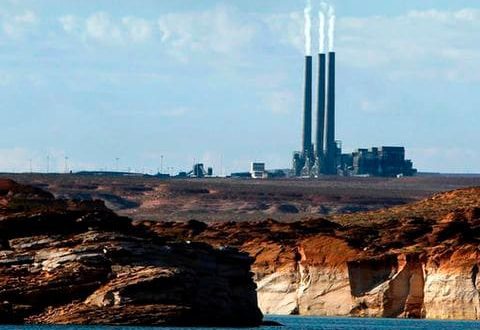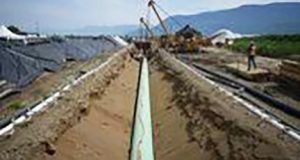By Felicia Fonseca
THE ASSOCIATED PRESS
ALBUQUERQUE, N.M. -One of the largest coal-fired power plants in the West will close this year as planned after a Navajo Nation company ended its long-shot bid Friday to acquire it.
The Navajo Generating Station has operated for decades in northeastern Arizona near the Utah border, providing a hefty chunk of revenue to the Navajo Nation. Both the Navajo and the neighbouring Hopi Tribe benefit from the Kayenta Mine, which feeds the 2,250-megawatt power plant, transporting the coal on a rail line.
Navajo leaders asked the Navajo Transitional Energy Company last year to look into acquiring the power plant and the coal mine as a way to save the revenue and hundreds of jobs held by tribal members.
Negotiations with the power plant owners came to a halt recently over who ultimately would be responsible for cleanup.
The owners wanted the energy company to take on any known or unknown liabilities for the plant, but the Navajo Nation declined.
With that and a decision Thursday from a Navajo Nation Council committee not to support the acquisition, the energy company called it quits.
The news will be tough for families who have relied on the jobs for generations, company spokesman Erny Zah said.
“A decade-long process would have definitely helped explore some newer opportunities that would have created economic stability for northeastern Arizona,” Zah said. “And, now, we are going to do our best to see what we can do to help.”
The Hopi Tribe did not immediately respond to a request for comment Friday.
Environmentalists have urged the Navajo Nation to ditch coal in favour of renewable energy projects. When the plant closes in December, the Navajo Nation will have access to a portion of the transmission lines under the existing lease agreement.
“Everyone else around the Navajo Nation is moving forward,” said Percy Deal, who lives near the coal mine at Big Mountain. “We just need to go forward and start rebuilding the community around the mine and the plant. We’re looking for recovery, and I’m glad it started today.”
The power plant owners cited cheaper prices for natural gas in deciding to close the power plant. An earlier bid by two companies to own and operate the plant fell through because they couldn’t get anyone to commit to buying the power.
The Navajo Transitional Energy Company had outlined a plan to operate the power plant for 10 more years, running two of the units and using the third for research of clean coal and other technology, Zah said. It would sell the energy at a point to be competitive with natural gas and have a lesser tax burden because it’s a tribal entity, Zah said.
Already, the majority owner and operator of the power plant, the Salt River Project, has offered 250 employees jobs at other facilities it runs. Most accepted, while others retired or declined, SRP spokesman Scott Harelson said. About 170 are left, and the utility is going to have some work done by contract employees.
Peabody Energy, which runs the Kayenta Mine, laid off 40 employees in late February and is sending its last shipment of coal to the power plant before the end of September, company spokeswoman Charlene Murdock said. About 300 workers are at the mine.
Zah said the Navajo Transitional Energy Company would hold a job fair for mine workers later this year.
Murdock said Peabody applauds those who worked to protect the jobs and preserve the energy source “even though these efforts ultimately couldn’t prevent premature closure of NGS.”
The Navajo Generating Station initially was built to move Colorado River water through a series of canals to Arizona’s major metropolitan areas. But the operators of the canal, like the power plant owners, said they could turn to natural gas as a cheaper source of energy.
 Aboriginal Business Magazine Your source for Aboriginal Business News
Aboriginal Business Magazine Your source for Aboriginal Business News



